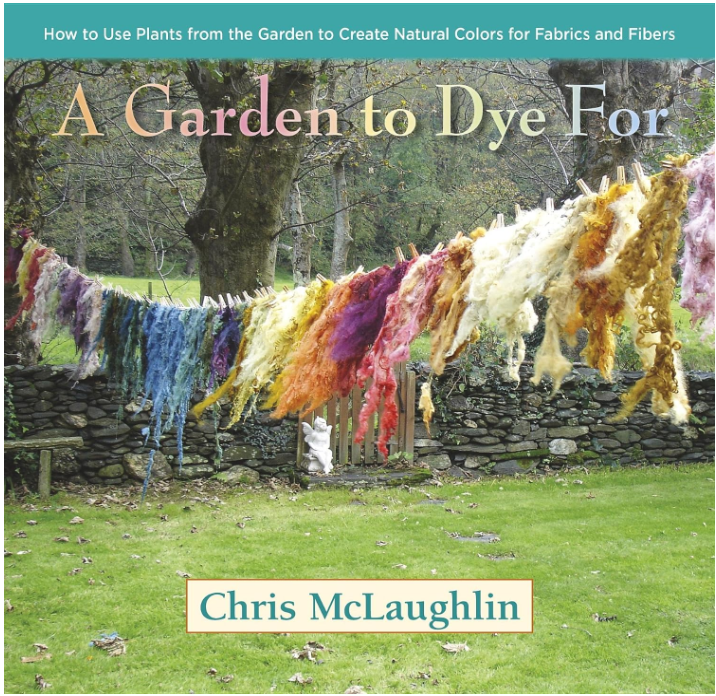Natural Dye Equipment and Books
Working with plants to naturally dye fibers has been an incredibly enjoyable experience. I love the process of researching the plants, gathering and experimenting with different fibers and approaches. The list below are the books and tools that I find the be the most helpful with these journeys.
The links go to my Amazon Associates page. This means that I may receive some funding with your purchase of these items.
Books
I feel that this book has the most research, examples and tutorials. I highly recommend this one over them all.
Wild Color by Jenny Dean
I feel that this book has the most research, examples and tutorials. I highly recommend this one over them all.
Harvesting Color: How to Find Plants and Make Natural Dyes by Rebecca Burgess
Rebecca’s book is excellent for those of us who live in Northern California. She is incredible with her development of Fiber Shed which focuses on returning the land back to healthy environments. By focusing on Natural Dye instead of Synthetic she is sharing how to be environmentally appropriate.
California Plants: A Guide to Our Iconic Flora by Matt Ritter
This is an EXCELLENT book on the plants that surround us. It gives you great photos on what to look for. There is also interesting bits of history and information about the plants that is enjoyable to read.
The Wild Dyer: A Maker's Guide to Natural Dyes with Projects to Create and Stitch by Abigail Booth
If you are interested in dying cotton fabric, this book goes through different ways of doing this. It also has great photographs and tutorials.
Natural Color: Vibrant Plant Dye Projects for Your Home and Wardrobe by Sasha Duerr
I just looovvee holding this book! It is gorgeous just to look at it. Inside there are many different types of dyes and approaches.
A Garden to Dye For: How to Use Plants from the Garden to Create Natural Colors for Fabrics & Fibers by Chris McLaughlin
If you are interested in Natural Dye then you are probably interested in gardening as well. This books goes through the flowers that you can grow yourself and enjoy.
The Handbook of Natural Plant Dyes: Personalize Your Craft with Organic Colors from Acorns, Blackberries, Coffee, and Other Everyday Ingredients and Sasha Duerr
This book is a newer one in my collection. It goes through even more explorations.
Mushrooms for Dyes, Paper, Pigments and Myco-Stix by Miriam Rice
This book is not found on Amazon at a reasonable price. I have shared the link below to the contact for the pacific Textile Arts Center. This is where I purchased my copy. I am sure that they could send you a copy.
Nature’s Colors: Dyes from Plants by Ida Grae
Search out your local thrift store first for this one. It is an older book, but it does have even more information.
Tools and Materials
Duxtop Large Induction Burner
This is the burner that I purchased. It is a larger size and perfect for the Canning Style posts. It was recommended to me by a friend who is a Natural Dyer and I love it!
Remember that you need to test a pot first with a magnet to see if it works.
Canning Pot that works on the Induction Burner.
I love this size of pot because you can get a lot of the fibers into this pot. I love canning food and this pot reminds me of the joy of doing that as well.
I am not giving an Amazon link for this because there is a better price at Ace Hardware.
https://www.acehardware.com/departments/home-and-decor/canning/accessories-and-prep/62274
Umbrella Swift and Yarn Ball Winder
This deal has the Umbrella Swift as well as the yarn ball winder. If you are going to be creating long sections of yarn, you want something like this. It will keep the yarn tidy as you prepare it for the tied up bundles.
Heat resistant gloves
These gloves look like they would work great for natural dye. You want gloves that are heat resistant. These have a high heat rating.
Kitchen Scale
I also own this kitchen scale. I like how small this one is and great for travel. I should have brought this one to the class.
Hydrion PH Strips
These are the strips that I use. They are not necessary but it is interesting to see how your colors may change because of the different levels.
Large mesh strainer
This looks like the strainer that I use. I got mine from a thrift store. What you want is something that has a fine mesh to get rid of seeds.
Mordants and Powdered Dyes from Dharma Trading Company
Cream of Tarter
Protein Fibers (Wool, Silk, Alpaca, Mohair, Angora, etc.)
Cream of Tarter is what you mix with Potassium Aluminum Sulfate to help the mordant to flow through the water better.
https://www.dharmatrading.com/dyes/cream-of-tartar-8.html?lnav=chemicals.html
Soda Ash or Washing Soda
This is what you are looking for if you want to Natural Dye with Cellulose fibers. This means cotton, linen, hemp, etc. The base of this is Sodium Carbonate.




















